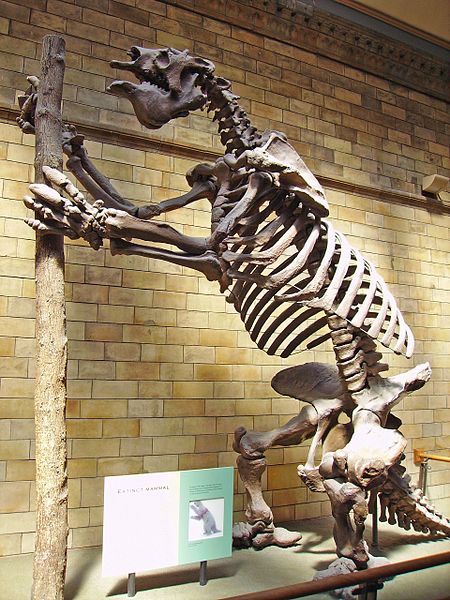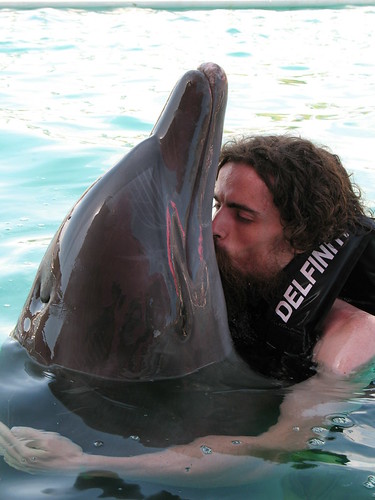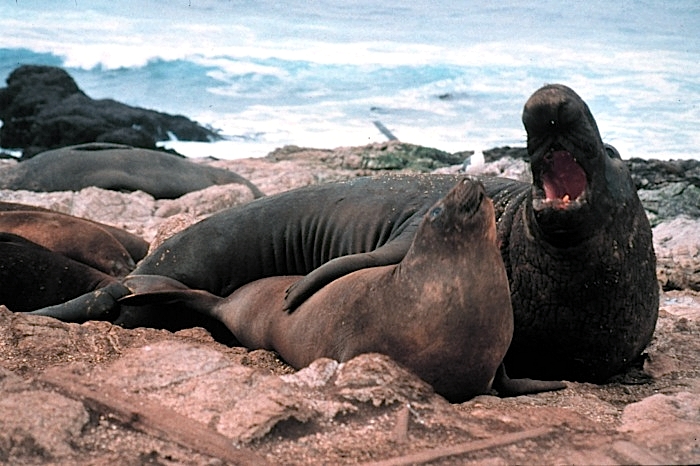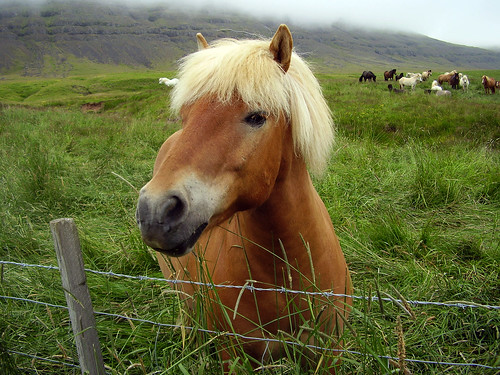BeastsRabbits live for four or five years in the wild. Rabbits are famous for mating like crazy, and having very rapid reproduction. Their breeding season lasts for nine months, from February to October. They can be kept as pets which do not mate at all - like a dog or cat - and as such enjoy double the lifespan - about nine years. Elephants typically live for 50 to 70 years, but the oldest recorded elephant lived for 82 years. The mating season is short and females are only able to conceive for a few days each year.
Lions live for ten
to fourteen years in the wild, while in captivity they can live longer
than twenty years. Their mating season is unlimited, and when they mate
they mate for around 200 times in
four days [1].
Most
lionesses will have reproduced by the time they are four years old. Lions do not
mate at any specific time of year, and the females are polyestrous. As
with other cats, the male lion's penis has spines which point
backwards. Upon withdrawal of the penis, the spines rake the walls of
the female's vagina, which may cause ovulation. A lioness may mate with
more than one male when she is in heat; during a mating bout, which
could last several days, the couple copulates twenty to forty times a
day and are likely to forgo eating. Lions reproduce very well in
captivity.
Dogs tend to live for ten to thirteen years. As with other domesticated species, domestication has selectively bred for higher libido, and earlier and more frequent breeding cycles in dogs than in their wild ancestors. In domestic canines, sexual maturity (puberty) occurs between the ages of 6 to 12 months for both males and females, although this can be delayed until up to two years of age for some large breeds. Males are receptive to mating at any time, even if the female is not in estrus. A female dog is diestrous and goes into heat typically twice every year, each heat lasting 4–13 days. Cats live 12 to 14 years indoors (and usually spayed), with females usually living a year or two longer. The lifespan of feral cats (which are not neutered and sexuallly active) was reported to average at 4.7 years. Unspayed females have heat periods which occur about every two or three weeks and last about 4 to 7 days and are induced ovulators (sex itself can induce ovulation, she doesn't have to be in heat to reproduce). Cats are polyestrous but experience a seasonal anestrus (a not sexually receptive, cold period) in autumn and late winter. So cats can mate almost whenever they want, and either the male can induce estrus, or the female can attract the male through estrus. Females are often impregnated by several different males at once, so their litters tend to have great variety. Horses reach full adult development by age five, and have an average lifespan of between 25 and 30 years. A mare may be 4 to 10 days each time she is in heat. Thus a cycle may be short, i.e. 3 weeks. Horses mate in spring and summer, autumn is a transition time, and anestrus (no sex) rules the winter. A feature of the fertility cycle of horses and other large herd animals is that it is usually affected by the seasons, which is useful for these animals in that, given a gestation period of about eleven months, it prevents them from having young when the cold of winter would make their survival risky. This is why these animals can only reproduce during certain times of the year. It also affords them a medium lifespan in the animal kingdom. Bonobos live around 40 years in captivity. They are relatives of the common chimpanzee, have won a reputation for promiscuity. Bonobos do not form long-term, sexual partnerships. Rather, they engage in sexual activity with single or multiple partners of either gender. They are now an endagered specie. The sex act must be very quick and expend much less energy and resources than with other species (c.f. the antechinus, which mates for 12 hours in suicide sex). Rats live an average of three years. Rats typically have rapid cycle times of 4 to 5 days. A 2007 study found rats to possess metacognition, a mental ability previously only documented in humans and some primates. Pandas can live from 10-20 years in the wild and 20-35 in a zoo or any captivity, which suggests that regulated mating and protection from harsh environmental conditions improves their lifespan.  Sloths in biblical times got pretty big, huh? Sloths live around 15 years in the wild and 35 years in captivity. They do most things upside down: eat, sleep (an average of 15 hours per day), mate, and give birth. Because of their upside down life, many of their internal organs are in different positions from other mammals. On the ground it pulls its body along because it can't walk on its feet. Surprisingly, sloths are good swimmers. Their ancestor, the Giant Ground Sloth, reached the size of a modern elephant. Antechini, mouse-like marsupials, are polygamous and notably promiscuous. Each antechinus female will mate with several males in a breeding season, with the result that a single antechinus litter has several fathers. The antechinus mating ritual is long and exhausting with copulation lasting up to twelve hours. To accomplish this the males strip their body of vital proteins and also suppress the immune system so as to free up additional metabolic energy. In fact, following the breeding season, there is complete die-off of the physiologically exhausted males of the group, which typically can live only to 11 months. (Females can live two or three years maximum in captivity, but typically they die after their first litter is weaned.) ___________________________________________________________________
Estrus frequencies of some mammals: * Ewe: 17 days * Bovine: 21 days * Goat: 21 days * Sow: 21 days * Elephant: 16 weeks _____________________________________________________________________
 One lucky dolphin gets a smooch from Jeebs. Notice the dolphin is closing its eyes, much like a human would. Dolphins live 20 years on average. They mate several times a day, do not distinguish gender, nor race or even specie. The act is short and most often incosequential, recreational or social, like with bonobos.  Elephant seals live around 20 years. Male elephant seals are extremely aggressive towards one another, fighting to become "beach masters." A beach master protects a harem of 30-100 female elephant seals and, in turn, mates with as many of the females as possible. A successful male can impregnate up to 50 females in single mating season and sire over 500 pups in a lifetime. They are therefore like dolphins, seen as promiscuous. Giant Tortoises like other reptiles have no known age or growth limit and can live to 300 years or more. They do not become sexually mature until they are around 38 years old. They are very picky about mating. They will only mate with their own race, and they have fourteen known races. They very rarely mate in general and are almost impossible to breed in captivity. ****
It is hoped that through discussion of animals and their habits, their intelligence and lifespans can be better understood. It is proposed that animals who expend great energy on sexual behavior are much shorter lived than animals that have well-regulated sexuality. Animals reputed to be promiscuous: Bonobo monkeys, antechini, lions, rabbits, sometimes dogs Animals reputed to rarely mate: Giant tortoises, certain kinds of snakes, elephants Animals reputed to have regular, average-length mating seasons (e.g. a few weeks out of the year): Wolves, horses, deer, goats |
Home About FAQ Who We Is How to Join KBH original Articles: Go Hang a Salami, I'm a Lasagna Hog! Thoughts on Kids How Faggy is Bodybuildin? Macho Murder? Cut-up Karma How to Keep Your Stallion in His Stall Health of Nations How to Talk Hick Re: Forums Sex is Not Enjoyable The End of Mankind A Discussion Between Dr. Rob and Uncle Jeebers Why Intoxicants Cause Spiritual Harm Links: celibacy.info atmajyoti.org semenloss.info Srila Prabhupada comin soon: The Cosmic Male Project site TrueKabbalah.org Pilgrimage List Celibates List From Crisis to Peace: How vegetarianism can save the world Semen
Loss
as
cause
of
disease:
1800's
French European physician article
Swami Sivananda: The Horror of Semen Loss article
Preservation of Vital Fluid: Sikh article
Natural Health Videos By
Magnus Muller
The Dangers of Mouth Breathing: pdf
articleThe Mormon Position Against Masturbation article 1 article 2 Uncle Jeebers: Against MGM Bonfire of Pro-porn Propaganda Spitual Warfare: pdf article |




